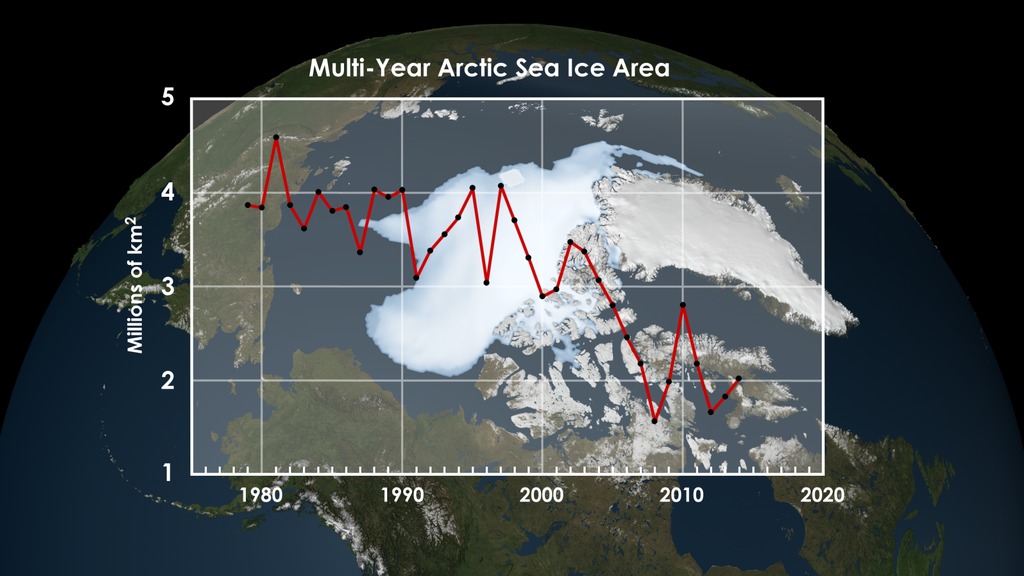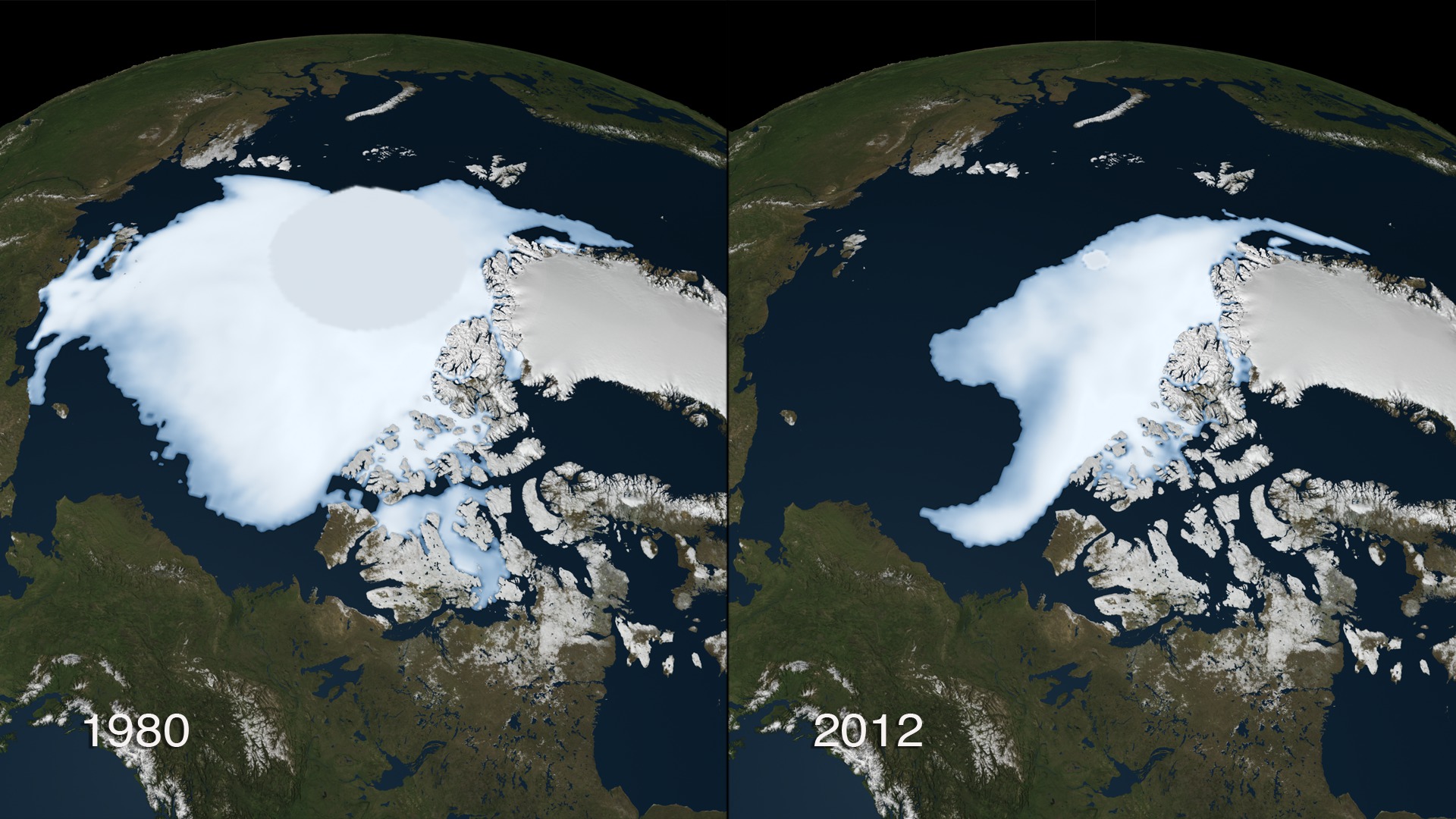Multi-year Arctic Sea Ice
The most visible change in the Arctic region in recent years has been the rapid decline of the perennial ice cover. The perennial ice is the portion of the sea ice floating on the surface of the ocean that survives the summer. This ice that spans multiple years represents the thickest component of the sea ice cover.
These still images show a comparison of the perennial Arctic sea ice and the first-year sea ice in 1980, 2008 and 2012. The bright white central mass shows the perennial sea ice while the larger light blue area shows the full extent of the winter sea ice including the average annual sea ice during the months of November, December and January.

An image of multi-year sea ice (brighter white) shown over the average sea ice (light blue) during the three winter months ending in January 2012. This image has a transparent background.

An image of multi-year sea ice (brighter white) shown over the average sea ice (light blue) during the three winter months ending in January 1980. This image has a transparent background.

An image of multi-year sea ice (brighter white) shown over the average sea ice (light blue) during the three winter months ending in January 2008. This image has a transparent background.
Credits
Please give credit for this item to:
NASA/Goddard Space Flight Center Scientific Visualization Studio
-
Visualizer
- Cindy Starr (Global Science and Technology, Inc.)
-
Animators
- Lori Perkins (NASA/GSFC)
- Greg Shirah (NASA/GSFC)
-
Producer
- Jefferson Beck (USRA)
-
Scientist
- Josefino Comiso (NASA/GSFC)
-
Project support
- James W. Williams (Global Science and Technology, Inc.)
-
Writer
- Maria-Jose Vinas Garcia (Telophase)
Release date
This page was originally published on Thursday, February 23, 2012.
This page was last updated on Wednesday, May 3, 2023 at 1:53 PM EDT.
Datasets used
-
Comiso's Multi-year Sea Ice Concentration [DMSP: SSM/I]
ID: 728
Note: While we identify the data sets used on this page, we do not store any further details, nor the data sets themselves on our site.

